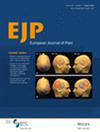The Effect of Information on the Time Course of Pain During an Episode of Acute Experimentally Induced Low Back Pain—A Randomised Experiment
Abstract
Background
We compared the time course of pain intensity ratings between two groups who were given different information during an episode of acute experimentally induced LBP.
Methods
Fifty weight-training naive and pain-free people participated in this randomised clinical experiment. Immediately after performing a back exercise intended to cause delayed onset muscle soreness, one group was told that their muscles had been damaged and advised they needed to protect their back over the coming days. The other group's symptoms were described in terms of tissue sensitisation, and they were advised to keep moving.
The primary outcome was movement-evoked low back pain intensity measured using an 11-point numeric rating scale (NRS 0–10). Pain intensity was recorded at baseline, immediately after the intervention and then daily for 7 days. The method of generalised estimating equations (GEE) was used to estimate treatment effects for average daily pain.
Results
Movement-evoked pain intensity scores changed over time in both groups (main effect of time: χ^2(7) = 246.2, p < 0.001). However, the intervention did not affect movement-evoked pain intensity scores (main effect of group: χ^2(1) = 0.02, p < 0.895). The adjusted mean difference between the groups was only −0.05/10 (95% CI –0.72 to 0.63, p = 0.895) when averaged across all time points.
Conclusions
We simulated an episode of low back pain and found that information based on tissue sensitivity and advice to remain active did not improve pain compared to information referencing tissue damage and advice to rest and protect the back.
Significance Statement
Contemporary clinical guidelines and models of care recommend avoiding pathoanatomical diagnostic labels and encourage clinicians to advise patients to stay active during an episode of acute low back pain (LBP).
We simulated an episode of acute LBP and found that information based on tissue sensitivity and advice to remain active did not improve pain compared to information referencing tissue damage and advice to rest and protect the back. The results could be different if repeated in a clinical population.


 求助内容:
求助内容: 应助结果提醒方式:
应助结果提醒方式:


